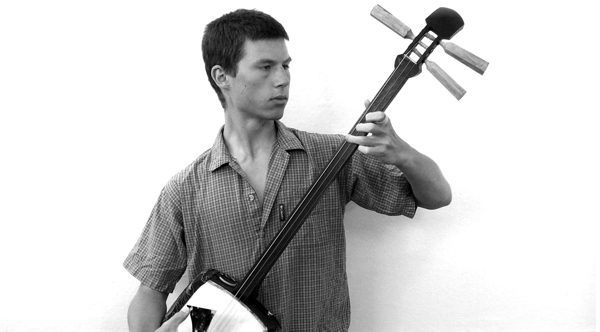
Initially, I didn’t know how long I would be interested in shamisen, which is why I built my own to save money. However, after building my third shamisen and constantly practicing songs, it was apparent that the shamisen’s unique tone had captured me.
I ended up falling in love (not in a romantic way) with the shamisen. The percussive snap of the skin, the buzzing sawari resonance, and the warm tones, it felt like the pinnacle of passion! (Again, in the artsy sense)
First trip to Japan (May 2010)
Up until now, most of my learning (both building and playing) was solely through self-teaching (a rather lonely endeavor, but I wasn’t the most social kid anyway, so it worked out).
Every year, Kevin and Grant would travel to Japan and compete in the tsugaru shamisen tournament. Each time, I decided to stay home and develop my art.
Though I didn’t go, I was still eager to experience the social world of the shamisen tournaments/conventions where hundreds of like-minded shamisen players and dozens of makers unite together.

I dreamed of going to Japan for many years, but it felt important to develop my craft before turning that dream into reality. So I waited three years, building my skills until I had something to confidently show.
In 2010, I had my third homemade shamisen and some sweet riffs ready, so with a box of Shamisen of Japan books and limited Japanese skill, I got my ticket for Japan!
You can check out the “Abbotty Blogcast” to see more of my travels in Japan, but for now I will skip ahead to attending the shamisen tournament.
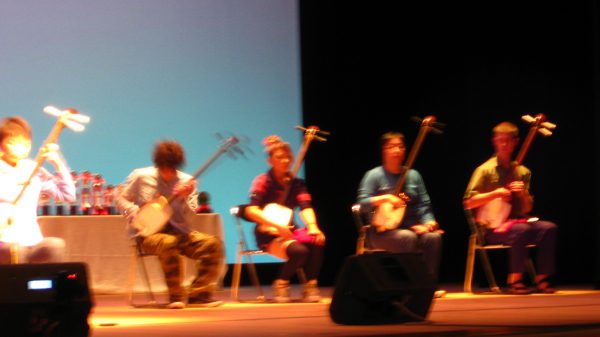
After five years of studying shamisen in rather seclusion, to finally enter an auditorium where people walked around with their shamisen felt at magical as… a kid fascinated with dinosaurs and finally entering Jurrasic Park! (Well, perhaps not the best analogy.)
Turn to the left and you see one of the Yoshida Brothers walking down the hall. Turn to the right and you see ten players rehearsing their group piece.
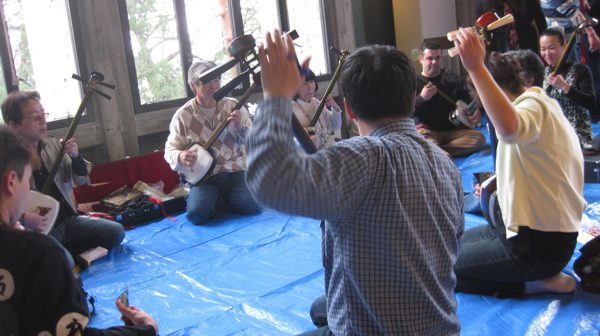
Bachi lined the tables, raw materials adorned the benches of the shamisen maker’s section, and it was all blanketed in a thundering din from hundreds of shamisen rehearsing at the same time.
Kevin was friends with many of the regular attendees, so he introduced me to them. I wasn’t a great player, so I was very glad to have my book and homemade shamisen to show I was passionate about it.

Honestly, I wasn’t sure how people would feel about my homemade shamisen or my book about building the instrument. Fortunately, the shamisen makers were very surprised and pleased to see such works. Though I previously thought all shamisen makers were private and secretive about their art, they were very happy that I was genuinely interested in their craft.
Again, my playing skill wasn’t very high, so I ended up connecting with the makers better than the players. To finally talk with real shamisen makers was so thrilling!
How did I do in the actual competition? “Watch it here!”
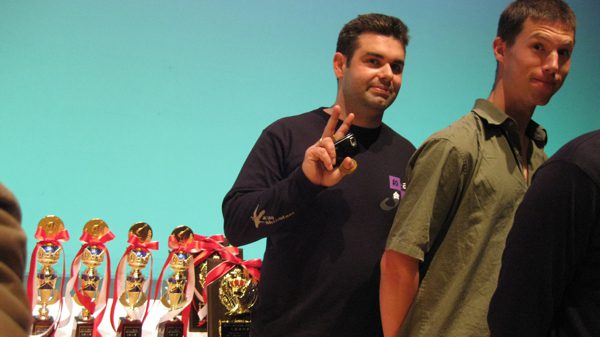
After the tournament, I went back to Tokyo and visited one of the makers. He was an incredibly talented craftsman who had a solid knowledge of sound at almost a molecular level. I had assumed someone of his great abilities would believe that there was only one ‘correct’ way to make a shamisen (a mindset I had thought was true). But his thinking was quite the opposite!
Though I’m paraphrasing, he roughly told me that “the shamisen is just wood and skin with three strings across it. There’s nothing magical about this instrument. If you have ideas for ways to adjust the shamisen’s sound or shape, there’s no reason not to do so. Keep building and keep experimenting!”
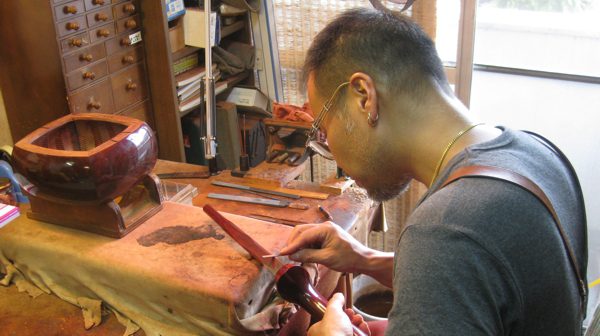
To hear this open-minded view from one of the most skilled makers in Japan completely changed the way I pursued shamisen. Though that craftsman may not have known it, the advice he gave (though paraphrased) would later greatly influence the foundation of Bachido.

I think of this tournament adventure as an awakening experience. I learned so much from years of self-practice, but the tournament opened my eyes to a completely new experience – the social aspect of the shamisen world.
To be surrounded in everything/everyone shamisen brought a whole new level of immersion. When I returned home from that experience, I could viscerally feel what was needed for international shamisen enthusiasts: Community!
